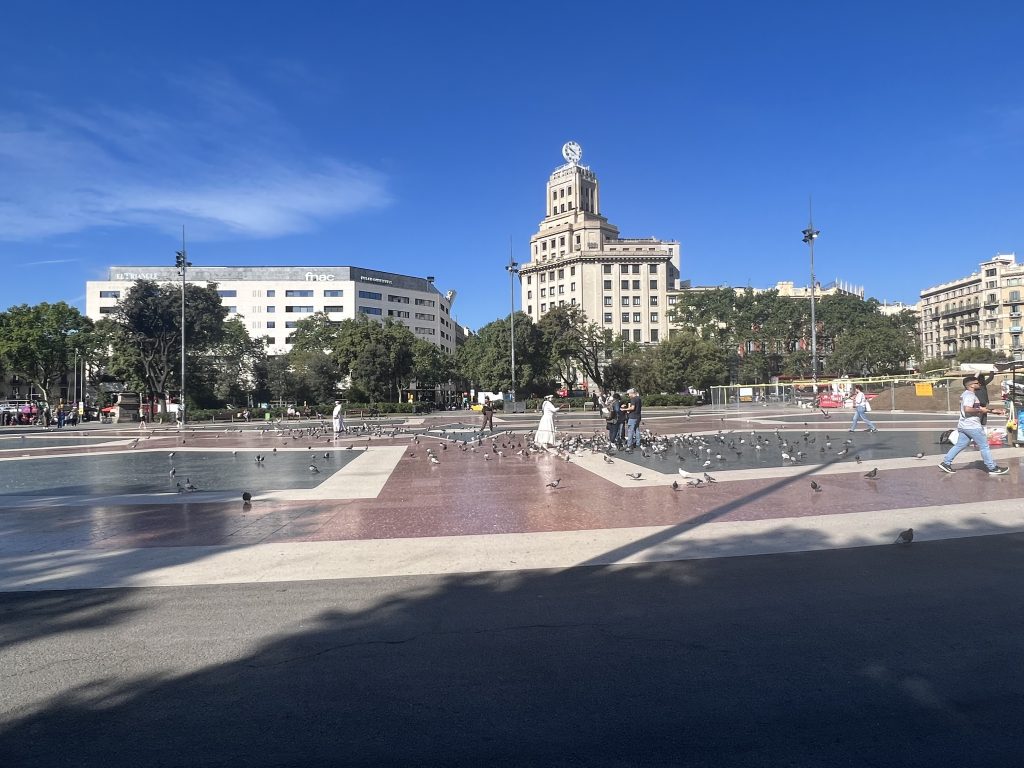In the continuation of traveling all over Europe, after the trip to Italy, the auspicious start of my trip to Spain is from Barcelona. Located in the northeastern part of Spain, Barcelona is the city of capital of the autonomous province of Catalonia and Spain’s largest port city on the Mediterranean coast. The ancient port city of Barcelona is today a center of education, culture, and commerce – attracting countless people from far and wide for work and travel. The city’s origins date back to the Roman Empire in the Middle Ages. In the heart of Barcelona, the Old Town still has some of the most ancient Roman remains. Barcelona has unique examples of modern art and architecture along with ancient traditions. Barcelona is a mix of modern and traditional, with modern and ancient European infrastructure with hundreds of years of exquisite craftsmanship. Barcelona is known for its artistic architecture; most magnificent landmarks are embedded with a fabulous designs. Also, football fans know very well about the charming and beautiful city decorated with mountains because Barcelona is the football club of choice for millions of people. If you are a traveler and not a tourist, and you walk the streets as you please, you will still stand in the way of Barcelona thousands of times in wonder and fascination.
Preparation:
After a rainy Venice trip, I got a sound sleep and woke up in the morning in a cheerful mood. Then, as usual, I freshened up, had breakfast, checked out of the hotel, and left for the airport. Since all the preparations were done before I started my journey from Bangladesh, now I begin with only mental preparation and a little Google search for the next destination. As usual, I had a ticket from Venice to Barcelona on Ryanair. I had a bit of a dilemma at the airport as online self-checking for Ryanair requires seat booking. If you do online self-checking without booking a seat, you must pay an extra fee of 51 euros at airport checking. Later I had to do the online self-checking by selecting the seat with an additional fee of 13 euros. From my experience, I am telling everyone that it is better to avoid Ryanair here. In this case, EasyJet is perfect because it allows you to skip seat booking during online self-checking. It takes about 2 hours by plane to go from Venice to Barcelona. After completing the immigration and leaving the Barcelona airport, I went directly to the hotel and checked in. Then I left my bag at the hotel and went out to find a restaurant for food. After having a meal at a nearby restaurant, I started exploring Barcelona.
Sightseeing:
To talk about Barcelona, I have to start with one name, Anthony Gaudi Cornet. For those who don’t know this man, he was an architectural wizard born in 1852. This Spanish architect genius man single-handedly changed the concept of architecture. His “sui generis” style of buildings, commercial architecture, and cathedrals was so innovative that the government of Barcelona spends billions of dollars every year to preserve them. And every year, millions of people come to see his immortal creations. Antoni Gaudi’s creations are scattered all over the city of Barcelona, which looks like the whole city was made by the hands of this magician. The structures of Antony Gaudi’s innovative designs are indeed not found anywhere else. His style is unlike any other, with seven buildings recognized as UNESCO Heritage Sites in Barcelona alone. If you want to go around the whole city, you can see only Antony Gaudi’s creations. Many people are surprised to see these buildings of Gothic style architectural design. The best thing about Barcelona is that you can find everything there. Rich in traditional culture, this city is surrounded by beautiful green mountains and a vast ocean on one side. You can go to the hills if you want, or you can lie on your back on the vast beach, or if you are a backpack traveler like me, you can walk around the city all day.
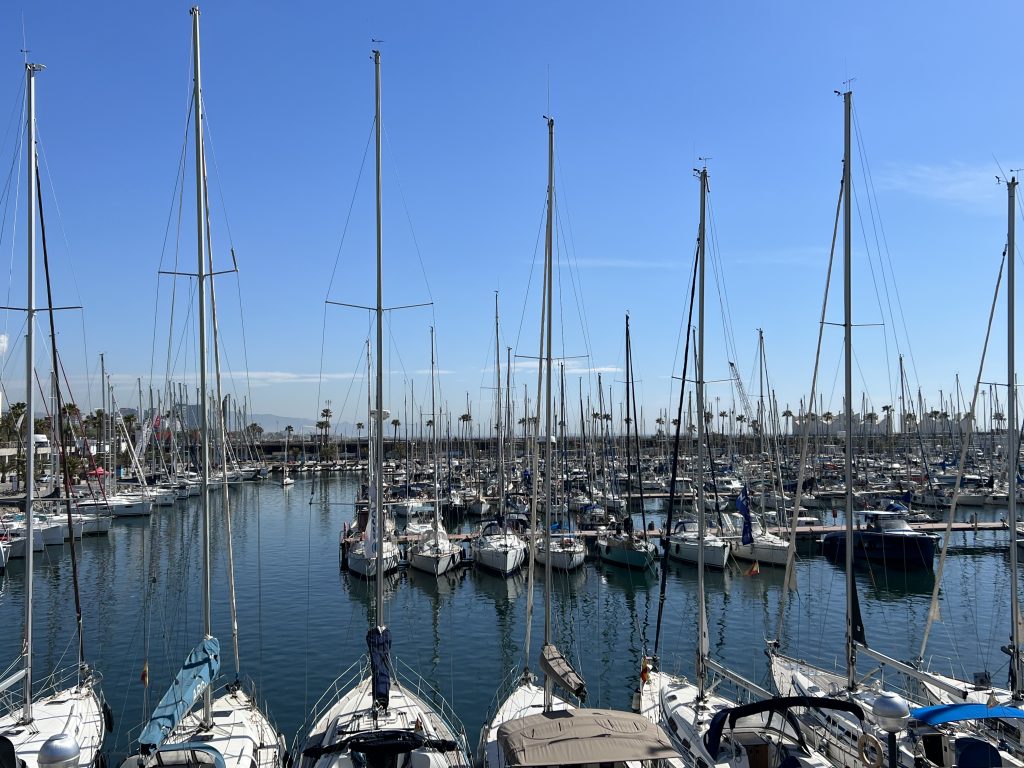
Basilica de la Sagrada Familia: A small example of what Antoni Gaudi Cornet’s creations were like is the “Basilica de la Sagrada Familia” – an incomparable masterpiece. It is a Roman Catholic minor basilica (like a cathedral) designed in 1882, and construction started exactly 14 decades ago. Still, its design was so complex and modern that there was not enough technology to make it work at the time. What’s more interesting is that this architecture is still under construction, and the probable year of completion is 2026. It is needless to say that such unique architecture will take place in the “UNESCO World Heritage Site.” The influence of nature is noticeable in the designs of Antoni Gaudi, one of the most iconic architects of modern Catalan architecture. The real beauty can be seen inside it when the sun shines. There is not an inch of space without a design in the entire establishment.
Cathedral of Barcelona: The Cathedral of Barcelona is a Gothic-style cathedral in the Gothic Quarter of Barcelona. It was constructed over six centuries, with its earliest sections dating back to the 13th century and its completion in the 19th century. The cathedral is devoted to the patron saint of Barcelona, Saint Eulalia. It features a stunning façade with intricate carvings and sculptures, including the twelve apostles and several saints. The cathedral’s interior is equally impressive, with soaring vaulted ceilings, colorful stained glass windows, and intricate Gothic-style decorations. It is a famous destination for tourists and locals alike and an important religious site for the people of Barcelona.
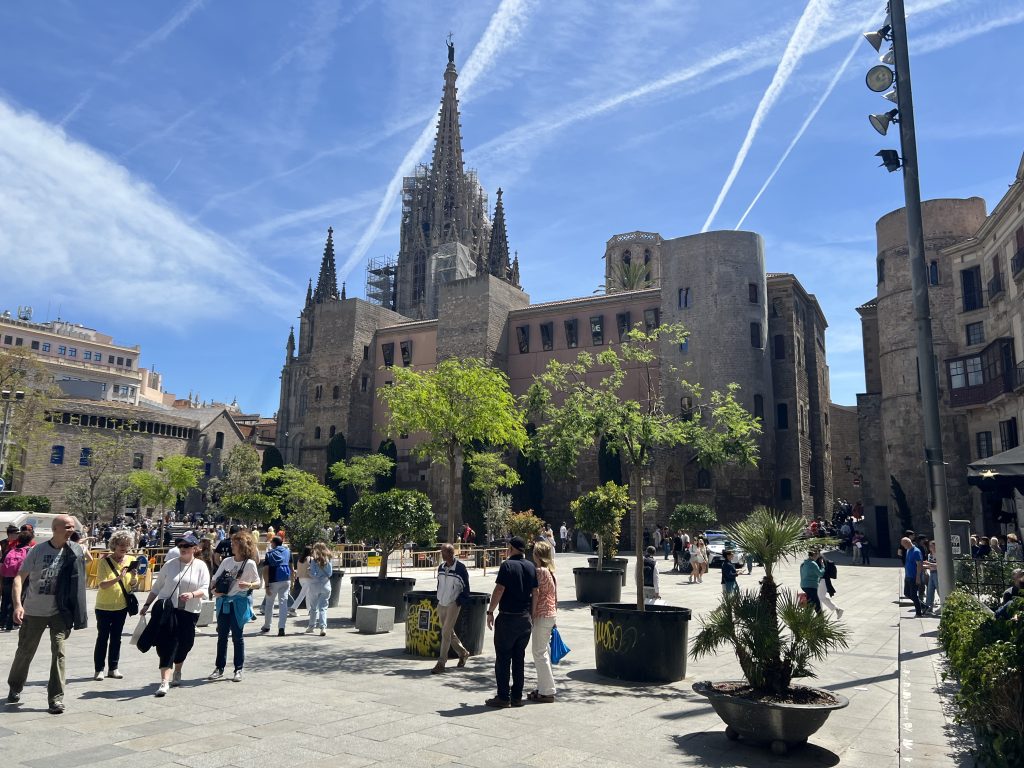
Plaça de Catalunya: It is a large square in the heart of Barcelona City. It is considered the center of Barcelona City and a famous meeting place for locals and tourists. Many important buildings and landmarks surround the square. It is also the starting point for La Rambla, one of the city’s most famous streets, lined with shops, cafes, and street performers. It is a popular spot for events and celebrations, including the famous New Year’s Eve celebration, which draws thousands of people annually.
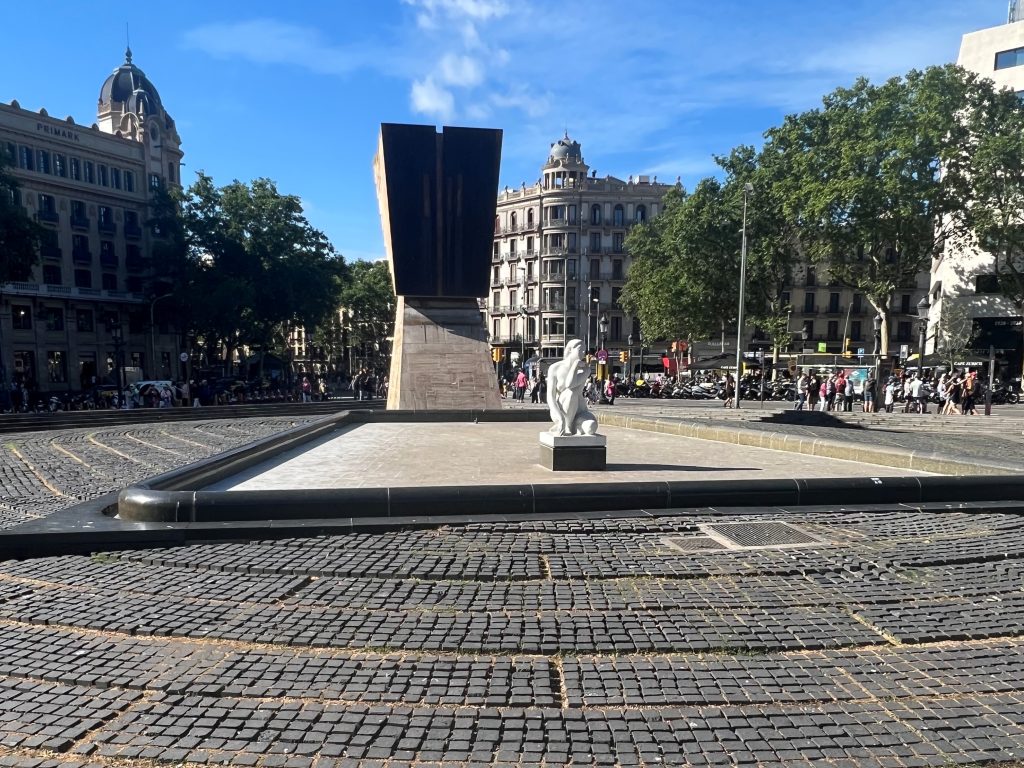
Camp Nou: Camp Nou is the home ground of FC Barcelona, a famous football club in Spain. It’s not just a stadium; it’s a landmark and part of Catalan culture. Currently, this ground is the largest stadium in Europe and one of the largest football stadiums in the world that can comfortably seat around one lakh people. There are a total of twenty-one access points to enter the campus. One hundred seven gates to enter the main stadium, of which access numbers fifteen and sixteen are the main entrance to the ground. A stadium tour can be taken for as little as 28 euros and will show you everything, dressing rooms, trophy cabinets, and dugouts. If you want, you can buy field grass for your lawn. The tour is closed on match days, so check the La Liga schedule before going.
Zoo de Barcelona: The Barcelona Zoo, or “Parc Zoològic de Barcelona” in Catalan, is known for its extensive collection of primates, including chimpanzees, gorillas, and orangutans. It also has a large aviary with various bird species and sections dedicated to reptiles, mammals, and marine animals. The zoo was opened in 1892 and is home to over 4,000 animals from more than 400 species. One of the zoo’s most famous residents was Snowflake, a rare white gorilla who lived at the zoo from 1966 until he died in 2003. It is open year-round and popular with families and animal lovers.
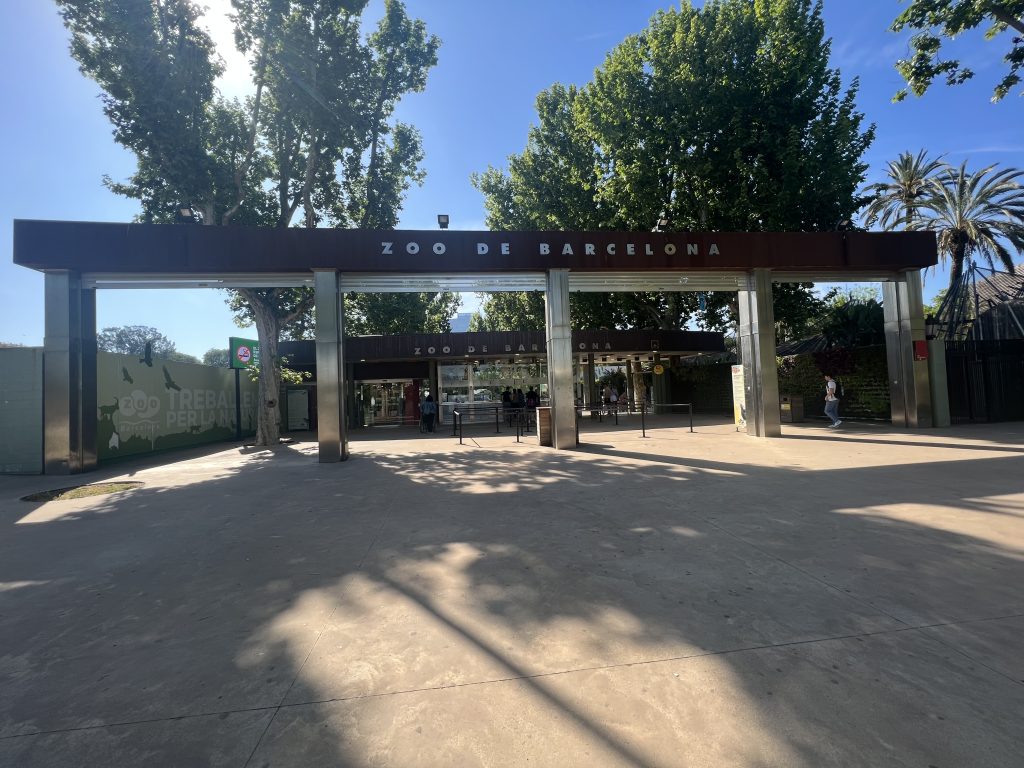
Arc de Triomphe: Arc de Triomphe is a famous destination for tourists and locals in Barcelona. It was built as the main entrance to the 1888 Barcelona World Fair and is at the end of the wide pedestrian promenade of Passeig de Lluís Companys. It is located in the beautiful Ciutadella Park and is surrounded by green spaces, fountains, and palm trees. The Catalan architect Josep Vilaseca I Casanovas designed the arch in a style that combines Neo-Mudéjar and Neo-Moorish elements, making it one of the most distinctive landmarks in the city of Barcelona.
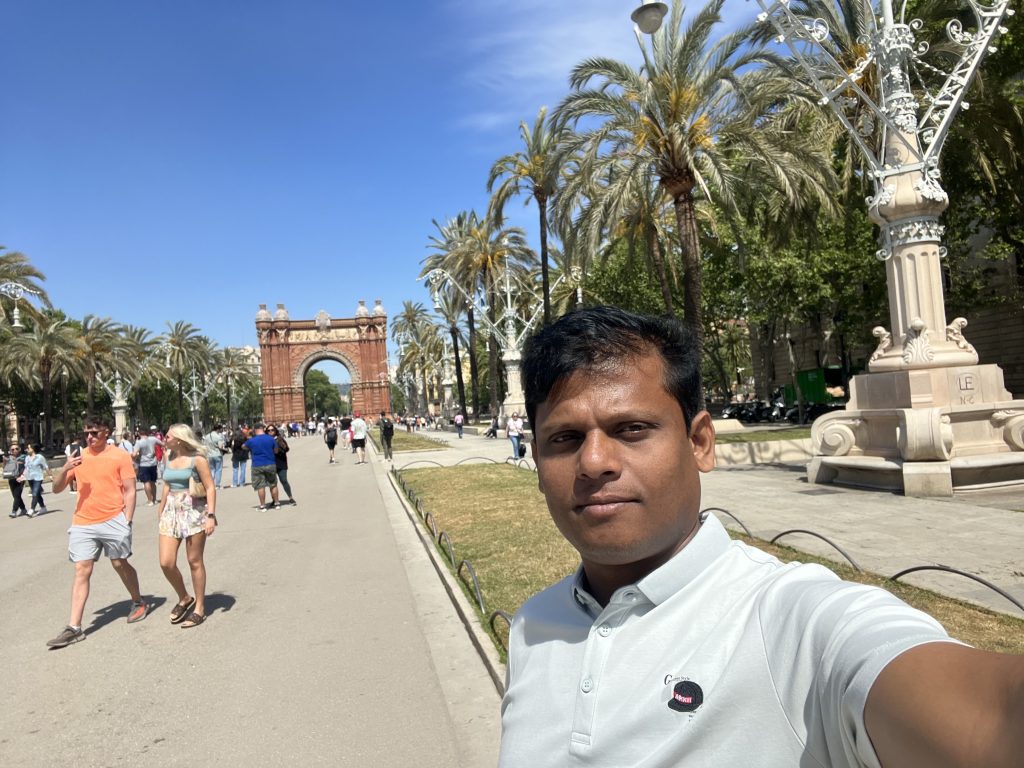
Torre Glòries: The Torre Glòries, formerly known as the Torre Agbar, is a skyscraper in the Poblenou neighborhood of Barcelona. Compared to a geyser or bullet, the tower has a unique shape created by the thousands of glass panels covering its exterior. At night, it is illuminated with a colorful LED lighting system, making it a prominent feature of Barcelona’s skyline. The tower includes various sustainable features, such as rainwater collection and reuse, energy-efficient lighting, and a system for natural ventilation. Visitors can have a guided tour of the tower, which includes access to the observation deck on the 10th floor, from where they can relish a panoramic view of the city and the Mediterranean Sea.
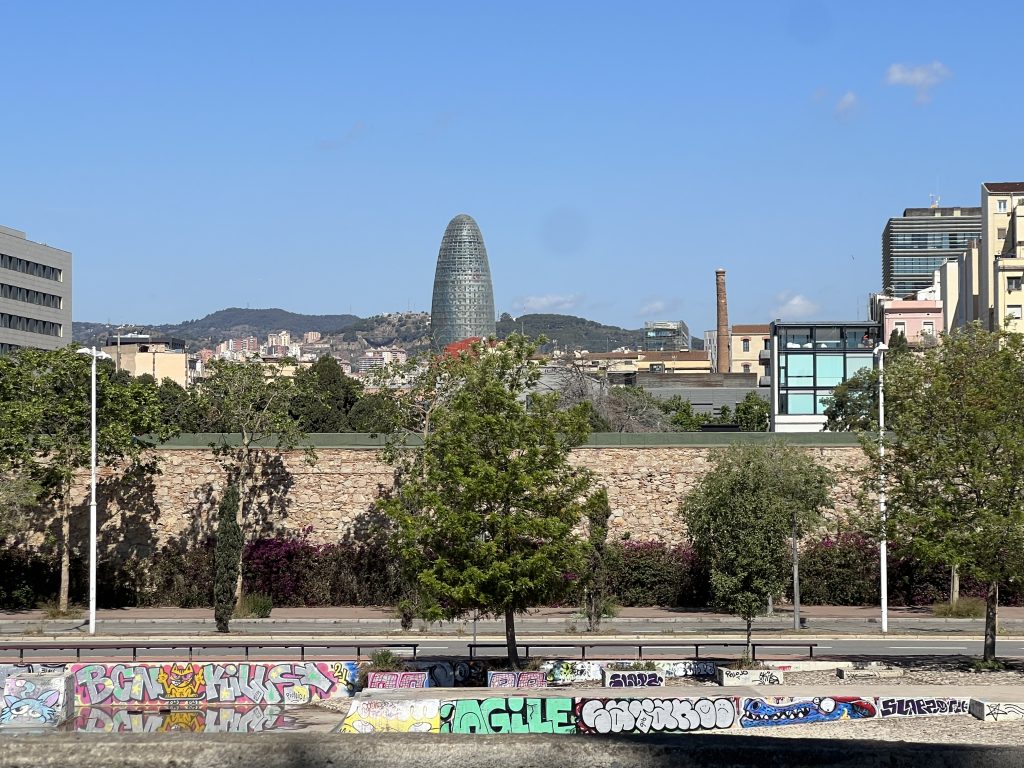
Beaches: Walking through an open park, I could hear the sea roar, but suddenly, the Beach of Barcelona came up! I stood at one end of the beach – this 3-4 km long beach goes around like the moon. Thousands of people were basking in the hot sun, European beaches as they should be. This side starts from St. Sebastián Beach, Barceloneta Beach, Nova Icaria Beach, and Mar Bella Beach, where none can be distinguished. However, for beach lovers, Barceloneta Beach is more famous here – white sand Mediterranean beach. Not unplanned like our beaches, where the small beach is beautifully landscaped and has all the modern amenities. On one side of the beach, a cable car will take you to the top of the hill a little way from the beach. A beautiful view of the entire city is available from this place. From this viewpoint, you can see how neatly the city is arranged.

Cost:
The total cost to go from Venice to Barcelona on Ryanair was 60€, with Airfare 27€, up to 10 kg hand carry fare 20€ and seat fare 13€. To stay in Barcelona, I searched the Internet and found a single room in an apartment, and I booked over a month in advance and had to pay $110, including tax, for a two-day stay. Barcelona has a T-Casual ticket for 11.35€, which allows you to ride any transport, be it bus, train, or tram, for up to 75 minutes per trip, a total of 10 times. As a European service, the price is relatively low, and many places can be covered if used according to proper planning. Also, travel passes are available for all vehicles, including buses and metro, at different prices for different periods starting from 2 days for 16.40€. It is worth mentioning here that, like many European countries, Barcelona also has Hop on – Hop off bus services for city tours costing as little as 33 Euros. The advantage is that you can board as many times as you want within the valid period, get off wherever you want, and many buses ply the same route throughout the day.
Some Essential Tips for Barcelona Tour:
- You can find hotel information on various websites. For example, you can know what kind of room, the facilities in the room, and how much the rent is. If you want to get cheap, know everything and book in advance. Follow the same approach for air tickets.
- Having an excellent guide to appreciate and better understand the surprising places at every step is convenient.
- If you only have a day or two planned, planning to visit the places of most interest is better.
- Many attractions are very close, so separate transportation is not necessary. However, you can take a free walking tour to see hidden gems around Barcelona.
- After checking out the Gothic Quarter, you will find Barcelona Main Square and Barcelona Cathedral, all on your way.
- All museums require a ticket to visit.
- Camp Nou can be visited for €18 outside of match time, and it’s best to check out La Liga’s gap schedule.
- Barcelona is an immaculate city, so don’t leave anything non-perishable anywhere.

